David Ryan
George Orwell on Screen
Jefferson, N.C.: McFarland & Company, 2018
This book took me down a rabbit hole when I discovered it last June. For several days I didn’t want to do anything but watch old television dramatizations and documentaries about George Orwell’s works and life. There have been a surprising number of them, and most of the key ones can be found online or in other digital media. A few, alas, have vanished into the ether, and we have to make do with David Ryan’s script synopses.
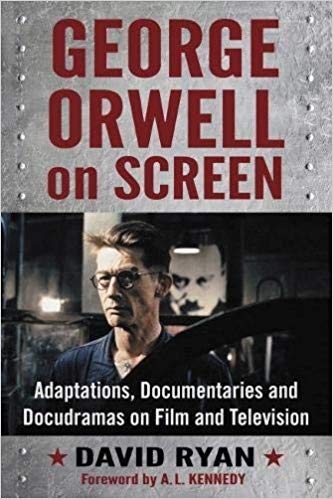 To his credit, Ryan does not spend much ink on critical analyses of the various presentations. That would make for a very fat and dreary book. In nearly every instance he’d have to tell us that the production was uneven and woefully miscast. I wondered if he was going to carp about the misconceived film adaptation of Keep the Aspidistra Flying (1997; American title: A Merry War). Not a bit of it; he leaves it to us to do the carping and ridicule. What he does provide is a rich concordance of Orwell presentations over the years, with often amazing production notes, technical details, and contemporary press notices. And if you don’t care to get that far into weeds, George Orwell on Screen is still an indispensable guidebook, pointing you to all sorts of bio-documentaries and dramatizations you might never discover on your own. This is particularly true of the many (mostly) BBC docos produced forty or fifty years ago, where you find such delights as Malcolm Muggeridge and Cyril Connolly lying down in tall grass and trading tales about their late, great friend.
To his credit, Ryan does not spend much ink on critical analyses of the various presentations. That would make for a very fat and dreary book. In nearly every instance he’d have to tell us that the production was uneven and woefully miscast. I wondered if he was going to carp about the misconceived film adaptation of Keep the Aspidistra Flying (1997; American title: A Merry War). Not a bit of it; he leaves it to us to do the carping and ridicule. What he does provide is a rich concordance of Orwell presentations over the years, with often amazing production notes, technical details, and contemporary press notices. And if you don’t care to get that far into weeds, George Orwell on Screen is still an indispensable guidebook, pointing you to all sorts of bio-documentaries and dramatizations you might never discover on your own. This is particularly true of the many (mostly) BBC docos produced forty or fifty years ago, where you find such delights as Malcolm Muggeridge and Cyril Connolly lying down in tall grass and trading tales about their late, great friend.
TV and film versions of Orwell’s last novel (published as Nineteen Eighty-Four in England, 1984 in America) weigh very heavily in the text, and also take up a lot of viewing time when you try to sit through them all. Among the first entries were live teleplays, one broadcast by NBC in 1953 (for the Studio One series), the other staged and broadcast twice by the BBC the following year. There was no videotape in those days, but we do have adequate if fuzzy kinescopes, recorded with a 16mm film camera aimed at a studio monitor. There were also radio adaptations in that era, including two riotous parodies by Spike Milligan and his Goon Show gang. And then, in 1956, came a big-budget feature film that was made in England but distributed under the American title 1984.
It raises some questions, this obsession with Orwell’s novel in the first half-decade or so after his death in January 1950. Was there a political motive at work, early in the Cold War? Was the book so rich in drama and human interest that everyone wanted to do it, the way all actors want to be Hamlet? I think the answer is much simpler. Live TV drama was a gaping maw that needed to be fed, and the hunger for scripts was intense, because radio drama was still very much a thing, too. (The first radio version was an American one soon after the book’s publication in 1949. It stars, incredibly enough, David Niven as a very suave-sounding Winston Smith.) Another reason for the abundance of 1984 productions might be that Orwell’s novel was that rare thing, a work of fiction that almost immediately entered common parlance, even among the many millions who never read the book. You’d have to go back to early Dickens or maybe Uncle Tom’s Cabin to find a novel with that kind of widespread impact. By 1950 anybody literate enough to read a newspaper knew who or what Big Brother was, and maybe could even appreciate jokes about “thoughtcrime” and “Room 101.”
Those two early teleplays, from NBC and the BBC, were melded together in a 1956 feature film, with Edmond O’Brien, Jan Sterling, Michael Redgrave, and Donald Pleasance (partly reprising his role from the BBC version). This version surpasses other screen adaptations in one respect: its exterior shots. It was made on location in London, and made use of recognizable landmarks and wartime bomb damage, giving us the dismal look and feel of the city in the novel. When there’s a celebration in Victory Square we don’t need to have it explained to us that this is really Trafalgar Square.
Balanced against this virtue are the movie’s oddities, and they are legion. Edmond O’Brien as Winston looks wasted and beaten-down, as Winston should, but here’s it’s as a paunchy and cirrhotic figure, rather than the gaunt and pallid nicotine addict in the book. Michael Redgrave wears a spaceship-commander uniform as the Inner Party bigwig O’Brien. Only in this movie they change his character’s name to O’Connor, because two O’Briens in the same film was thought to be too confusing for the audience.
And then there’s the problem of the finale. The novel’s finish was thought too downbeat, with Winston a broken man, drunk on clove-scented gin and separated from Julia, waiting for a bullet in the back of the head. So the director shot two different endings, one in which Julia and Winston get back together again, briefly, after which Winston finds redemption by cheering for Big Brother; and a second one in which Julia and Winston shout “Down with Big Brother” and start ripping down Big Brother posters. This “Down with Big Brother” ending is said to have been distributed in the British (and presumably European) market. I saw it on television someplace a long time ago and it was a real surprise: had I completely misremembered the ending?
* * *
Viewing the two teleplays and their mashup in the 1956 movie, one notices that, production values aside, the American “take” on the Orwell story was very different from the British one. American tastemakers conceived of 1984 as futuristic science-fiction. You see this in the lurid cover of the original Signet paperback, and in the posters for the 1956 film. The stark sets and random costumes in the 1953 Studio One production will put one in mind of something by Edward D. Wood, Jr. The designers were aiming for something like German Expressionism, but the effect is more like a cardboard dollhouse. While Big Brother posters are everywhere, “BB” is nothing like the mustachioed Stalin avatar that Orwell had in mind. Instead, “Big Brother Is Watching You” appears over a “hairless, freakishly distorted cartoon face [that] looks like something Mad magazine has commissioned from Picasso” (as author David Ryan puts it).
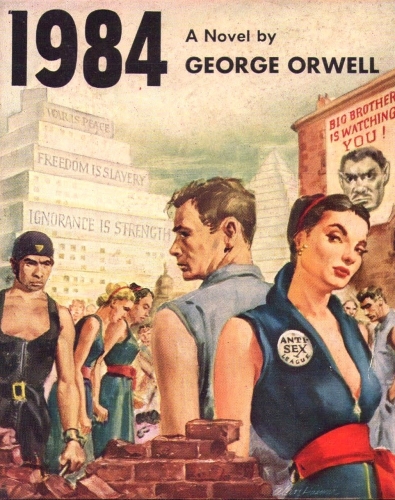
Speaking of Ed Wood: Lorne Greene plays a very fey O’Brien, rather like Bunny Breckinridge’s “Ruler” character in Plan Nine from Outer Space. He wears an ornate suitcoat, sort of early-Roxy-usher, to indicate his high status in the Inner Party. When he slips Winston Smith (Eddie Albert) his address and suggests they get together that evening, it looks to all the world like a homosexual assignation. And some of the costume choices suggest that the crew didn’t understand the book at all. Orwell put most of his Party members in “overalls”: meaning, the kind of onesie garment that flight mechanics would wear; like Winston Churchill’s “siren suit.” But the costume people at Studio One saw “overalls” and thought of farmers’ bib overalls. So Eddie Albert as Winston was going to go around attired in necktie and farmer overalls, foreshadowing his 1960s sitcom role in Green Acres. But it appears somebody caught the mistake at the last minute, and came up with a few grease-monkey outfits, so at least Winston and the male ensemble don’t look entirely foolish.
What I found most baffling and annoying about this 1953 NBC production is that it entirely ignores the significance of Emmanuel Goldstein in the Two Minutes’ Hate. There is no Goldstein; instead the giant telescreen shows us a beefy talking-head known as Cassandra. Perhaps the Studio One producers were chary of Goldstein’s Jewishness. Or perhaps they didn’t want to complicate things by alluding to the whole Trotsky-vs.-Stalin saga, or suggest that Orwell’s novel (author’s disclaimers notwithstanding) really truly was about Soviet Communism.
This coyness carried over into the 1956 feature film, scripted by the same scenarist, William Templeton. Once again, no Emmanuel Goldstein, no explicit suggestion of Communism per se. But this time they couldn’t call the telescreen traitor Cassandra, because in mid-1950s England “Cassandra” had a very special meaning: not the doomsayer of Ilium, but a popular, snarky columnist in the Daily Mirror. It would be like calling the Goldstein figure “Liberace.” So when the morning scrum at the Ministry of Truth gathers for their Two Minutes’ Hate, their wrath focuses upon a talking head called “the archenemy Kalador.” Kalador? Just a sci-fi-sounding name the writer or someone pulled out of the air. Inexcusable.
No such issues in the 1954 BBC teleplay. The costumers knew what “overalls” were, and the producers weren’t touchy about using the name Emmanuel Goldstein or alluding to Leon Trotsky. Here the Goldstein on the telescreen is even made up to look like Trotsky. This production is twice as long as the American one, and has sufficient time to develop minor characters and subplots. Winston Smith is played by Peter Cushing, which gives the drama something of a Hammer Horror aspect (after all, Nineteen Eighty-Four is indeed a horror tale). The real diamond in the cast, though, is young Donald Pleasance as Syme, the nerdy lexicographer who can’t stop talking about the wonders of Newspeak. In fact, I’m pretty sure he has more lines in this teleplay than he does in the book.
The BBC dramatization is also much more inventive when it comes to Room 101. NBC’s Studio One version briefly locks Eddie Albert in a cubicle with (unseen) rats. Eddie screams. Blackout. So much for the horrors of Room 101. But the BBC crew really went to town. They built a whole kludgy apparatus for the rats, involving a cage, a face mask, and a kind of plastic ventilation coil running between them (something like a supersized version of the Habitrail ducts that hamsters scamper around in). Unfortunately the rats weren’t at all fearsome or hungry when they shot this scene, so we end up with insert shots of peaceful lab rats sniffing around their cage. But you have to give the set techs an E for Effort.
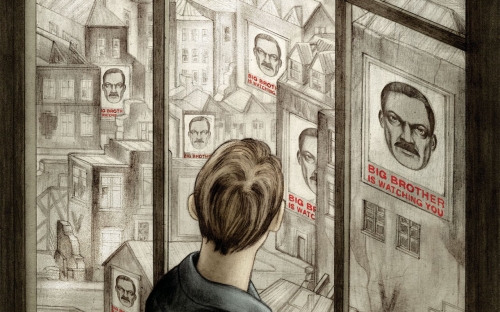
The crucial difference between the 1953 American teleplay and the 1954 British one is how they approach the material. Once again, the American team thought they were doing science fiction. The British team dealt with it all as naturalistic kitchen-sink drama. This seems to me to be the only correct way to deal with Orwell. Those bedraggled Party members, sullenly putting in time at the Ministry of Truth; downing their disgusting grey stew at the canteen; maintaining themselves in a mild stupor with regular shots of cheap gin—this is pretty much wartime London as Orwell knew it and as the BBC crew remembered it. There’s very little here that’s futuristic.
Tellingly, when The Goon Show did their parody, “Nineteen Eighty-Five,” it was mainly a series of jokes about the food at Big Brother Corporation’s office canteen.
ANNOUNCER:
(over public address system) BBC workers. The canteen is now open. Lunch is ready. Doctors are standing by.
FX:
SOUND OF CANTEEN HUBBUB, CUPS & SAUCERS CLINKING
WINSTON:
As I sat at my table eating my boiled water I began to hate Big Brother Corporation.
The “naturalistic” BBC television script had a long afterlife. After being presented twice in 1954 and parodied by the Goons in 1955, it was re-produced in 1965, for a series called The World of George Orwell. And when Michael Radford made his visually stunning feature with John Hurt and Richard Burton (filmed and released in A.D. 1984), the film’s mise-en-scène recalled the fetid atmosphere of the BBC teleplays rather than the confused, big-budget 1956 movie. What’s missing in the Radford version is a clear backstory, as reflected in the novel’s atmosphere of wartime privation and squalor. This was something easy to get across in the 1954 BBC teleplay, but it doesn’t really register in the Radford version, which seems to take place in an alternative reality that exists somewhere outside our own chronological scheme.
* * *
Finding the right tone for dramatizing Orwell seems to be more of an obstacle for scriptwriters than it ought to be. Nearly everything he wrote was a depresso-gram, highly resistant to playful optimism. Earlier I mentioned Keep the Aspidistra Flying, a woeful black comedy that is set in the 1930s but follows a similar plot arc to Nineteen Eighty-Four. Somebody made a BBC teleplay of Aspidistra in the 1960s, and that seems to have been pretty faithful to the book. I.e., it was a downer. It didn’t get revived or rebroadcast, and eventually the BBC lost or erased the tapes. When the property came up again thirty years later as a feature production, the decision was made to turn it into a frothy period piece about a carefree young couple (Richard E. Grant and Helena Bonham-Carter), and that’s pretty much what we got. The idea seemed to be that the only acceptable treatment of the 1930s was something out of Masterpiece Theatre.
Two of Orwell’s best and most adaptable novels, Burmese Days and Coming Up for Air, have never gotten anywhere near feature production. The first seems to be permanently trapped in development hell, while the second was made into a BBC teleplay way back in 1965 and hasn’t been heard from since.
And then there’s Animal Farm, filmed twice but very unsatisfactorily, once in cel animation (1954) and once in live-action-plus-CGI (1999). In both instances the directors/animators missed the essential point: that this is a talking-animal tale (“A Fairy Story,” Orwell subtitled it), and the talking animals need to have distinct, developed personalities. Those personalities get lost in these films. Because in the first production the animals don’t really get to talk, the whole drama being explained in voice-over narration. The 1999 production went to the other extreme, giving us an Uncanny Valley of “real” talking barnyard animals. Instead of Orwell’s fairy-tale anthropomorphized critters, we get grotesque close-ups of drooling dogs and snot-nosed hogs. The effect is horrifying. Any sympathy we might bring to Orwell’s delightful creations doesn’t stand a chance.



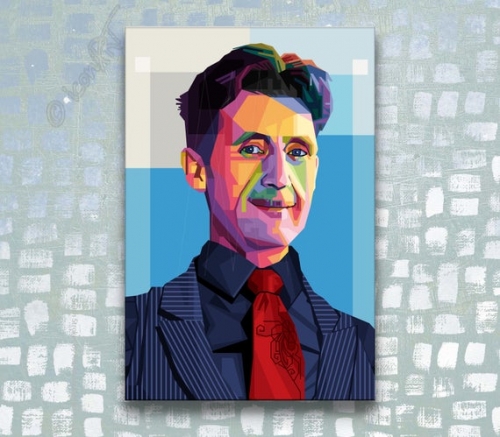

 del.icio.us
del.icio.us
 Digg
Digg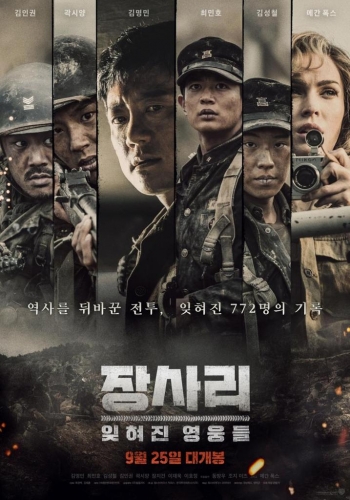
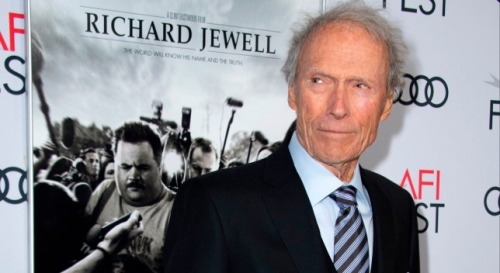



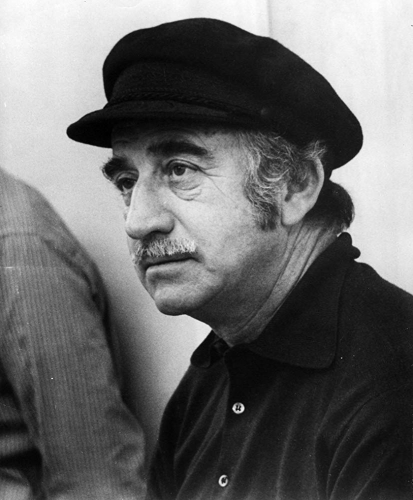
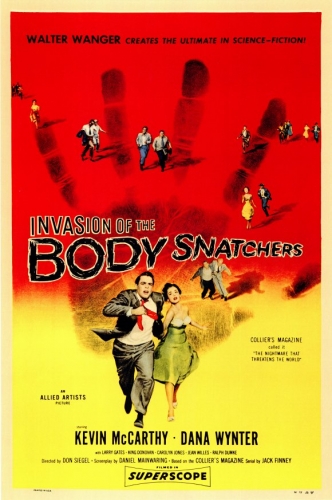 On l’aura au moins dit une fois.
On l’aura au moins dit une fois.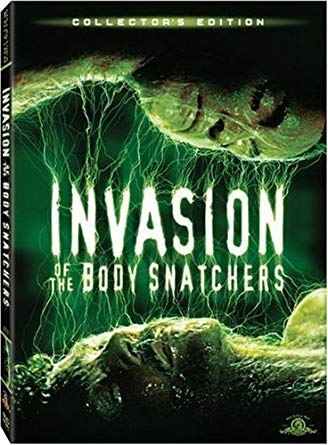 Le film donc dénonçait notre déshumanisation progressive et indolore sous l’effet de la technique et de la communication. Et ce n’est pas moi qui le dit mais
Le film donc dénonçait notre déshumanisation progressive et indolore sous l’effet de la technique et de la communication. Et ce n’est pas moi qui le dit mais 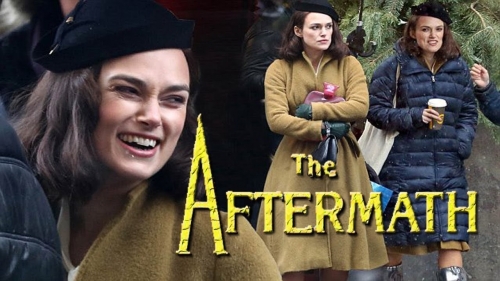
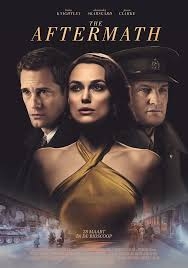 Cinematographer Franz Lustig’s opening scenes confront even the most unsuspecting and ill-informed audience with the sight of an almost obliterated Hamburg filled with crumbling buildings. Raw footage shows, or at least intimates, that a deliberate and premeditated plan had achieved its desired effect of sending Germany back to the Stone Age. This plan, codenamed Operation Gomorrah, which was at the time the heaviest aerial assault ever undertaken, was later called “Germany’s Hiroshima” by British Bomber Command. Reel after reel offers shocking images: black-and white photo montages of the chaff-filled skies and the abhorrent results of the merciless firebombing that had raised a four-hundred-and-sixty-meter scorching-hot tornado that reached temperatures of up to eight hundred degrees Celsius, and swept over twenty-one square kilometers of the city. Carried out by Lancaster, Wellington, Stirling, and Halifax aircraft, their blockbuster bombs turned asphalt streets into rivers of flame, asphyxiating young and old alike in a sea of carbon monoxide, and as one eyewitness later recalled, it “sucked people like dry leaves into its molten heart.”
Cinematographer Franz Lustig’s opening scenes confront even the most unsuspecting and ill-informed audience with the sight of an almost obliterated Hamburg filled with crumbling buildings. Raw footage shows, or at least intimates, that a deliberate and premeditated plan had achieved its desired effect of sending Germany back to the Stone Age. This plan, codenamed Operation Gomorrah, which was at the time the heaviest aerial assault ever undertaken, was later called “Germany’s Hiroshima” by British Bomber Command. Reel after reel offers shocking images: black-and white photo montages of the chaff-filled skies and the abhorrent results of the merciless firebombing that had raised a four-hundred-and-sixty-meter scorching-hot tornado that reached temperatures of up to eight hundred degrees Celsius, and swept over twenty-one square kilometers of the city. Carried out by Lancaster, Wellington, Stirling, and Halifax aircraft, their blockbuster bombs turned asphalt streets into rivers of flame, asphyxiating young and old alike in a sea of carbon monoxide, and as one eyewitness later recalled, it “sucked people like dry leaves into its molten heart.”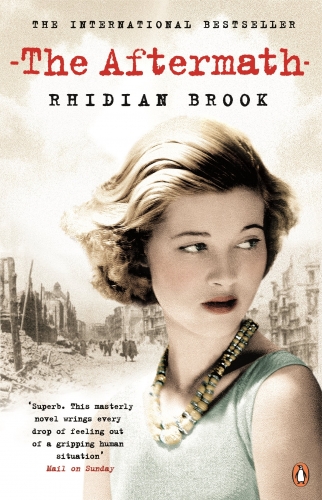 Stefan Lubert (Alexander Skarsgard), a widower, and his daughter Freda (Flora Thiemann), are the people whose palatial home Rachael has in effect invaded when it is requisitioned by the occupying forces to billet the Morgans. Rachael insists, “I want them out!”, which means in effect expelling them to the refugee camps. She also asks them difficult questions about a certain portrait that had only recently been removed from a place of honor over their fireplace and hurriedly replaced by another painting. These are petty acts of spiteful sadism that were no doubt common practice and openly endorsed by the non-fraternization code at that time, but in the context of the film’s narrative clearly signals more about Rachael’s own insecurities than it does about any misdemeanors or malicious intent on the part of those in whose home she resides.
Stefan Lubert (Alexander Skarsgard), a widower, and his daughter Freda (Flora Thiemann), are the people whose palatial home Rachael has in effect invaded when it is requisitioned by the occupying forces to billet the Morgans. Rachael insists, “I want them out!”, which means in effect expelling them to the refugee camps. She also asks them difficult questions about a certain portrait that had only recently been removed from a place of honor over their fireplace and hurriedly replaced by another painting. These are petty acts of spiteful sadism that were no doubt common practice and openly endorsed by the non-fraternization code at that time, but in the context of the film’s narrative clearly signals more about Rachael’s own insecurities than it does about any misdemeanors or malicious intent on the part of those in whose home she resides.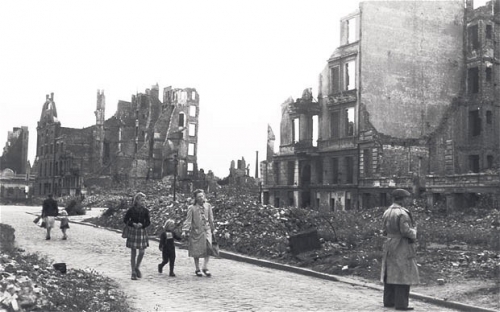

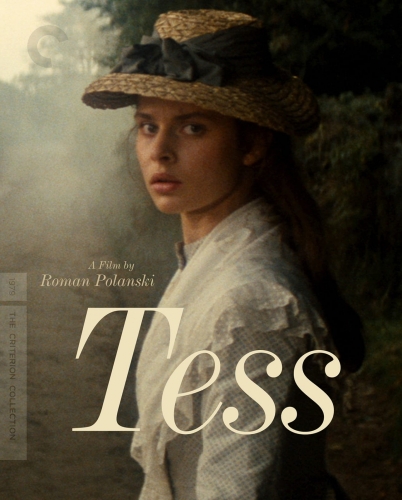 En revoyant le ghost writer de Polanski, j’ai compris pourquoi ce maître impertinent avait connu tant de problèmes avec la justice américaine. Il y est fait mention des conspirations anglo-saxonnes à travers le monde, du comportement de Tony Blair, des guerres médio-orientales de Bush, ainsi que du train de vie oligarque des hommes politiques postmodernes (« à moi la belle vie », comme disait Sarkozy). Et il est facile de voir dans l’œuvre de Polanski une récurrence : la critique radicale des élites – voyez Tess, le bal des vampires, ou bien sûr le grand classique Chinatown. On rajoutera le Couteau dans l’eau, qui dénonçait audacieusement la nouvelle bourgeoisie communiste et on n’oubliera pas le bébé de Rosemary, dont j’avais souligné le contenu subversif dans ma Damnation des stars publiée en 1996 chez Filipacchi.
En revoyant le ghost writer de Polanski, j’ai compris pourquoi ce maître impertinent avait connu tant de problèmes avec la justice américaine. Il y est fait mention des conspirations anglo-saxonnes à travers le monde, du comportement de Tony Blair, des guerres médio-orientales de Bush, ainsi que du train de vie oligarque des hommes politiques postmodernes (« à moi la belle vie », comme disait Sarkozy). Et il est facile de voir dans l’œuvre de Polanski une récurrence : la critique radicale des élites – voyez Tess, le bal des vampires, ou bien sûr le grand classique Chinatown. On rajoutera le Couteau dans l’eau, qui dénonçait audacieusement la nouvelle bourgeoisie communiste et on n’oubliera pas le bébé de Rosemary, dont j’avais souligné le contenu subversif dans ma Damnation des stars publiée en 1996 chez Filipacchi.
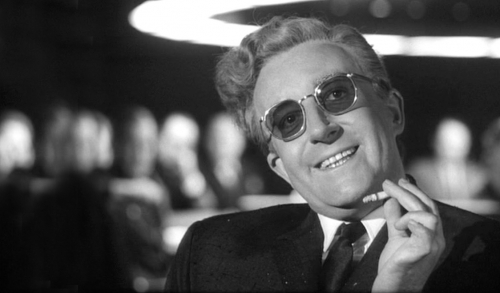
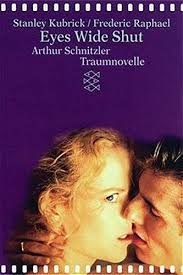 « Ziegler pourrait jouer lui au contraire un rôle d’élite cosmopolite et rigolarde, aimable et protectrice (à la manière de certains hiérarques socialistes ?). Dans sa manière de traiter Bill paternellement, il nous rappelle ce mot d’esprit cité par Freud à propos d’un petit-bourgeois qui se croyait ami de Rothschild :
« Ziegler pourrait jouer lui au contraire un rôle d’élite cosmopolite et rigolarde, aimable et protectrice (à la manière de certains hiérarques socialistes ?). Dans sa manière de traiter Bill paternellement, il nous rappelle ce mot d’esprit cité par Freud à propos d’un petit-bourgeois qui se croyait ami de Rothschild : 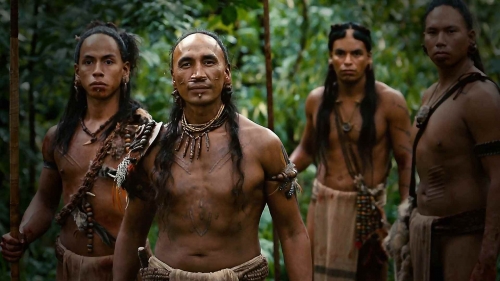
 The film does not fall short of its epic ambitions, and its success is a testament to Gibson’s vision and his technical mastery as a filmmaker. Even his many enemies have to admit that he is one of the most talented directors alive today.
The film does not fall short of its epic ambitions, and its success is a testament to Gibson’s vision and his technical mastery as a filmmaker. Even his many enemies have to admit that he is one of the most talented directors alive today.

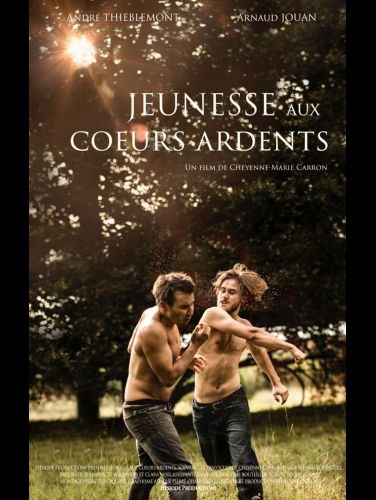 Un jour, leur victime est un ancien militaire ayant servi dans la Légion étrangère et ayant fait la guerre d’Algérie. Henri, « le capitaine », refuse de baisser les yeux comme le lui ordonne un complice de David. C’est là l’acte fondateur de ce qui, petit à petit, provoquera chez David une admiration, voire une fascination, pour cet homme âgé dont la vie consiste à défendre des valeurs fort éloignées de son monde à lui en même temps que l’honneur et la mémoire de ses anciens soldats.
Un jour, leur victime est un ancien militaire ayant servi dans la Légion étrangère et ayant fait la guerre d’Algérie. Henri, « le capitaine », refuse de baisser les yeux comme le lui ordonne un complice de David. C’est là l’acte fondateur de ce qui, petit à petit, provoquera chez David une admiration, voire une fascination, pour cet homme âgé dont la vie consiste à défendre des valeurs fort éloignées de son monde à lui en même temps que l’honneur et la mémoire de ses anciens soldats.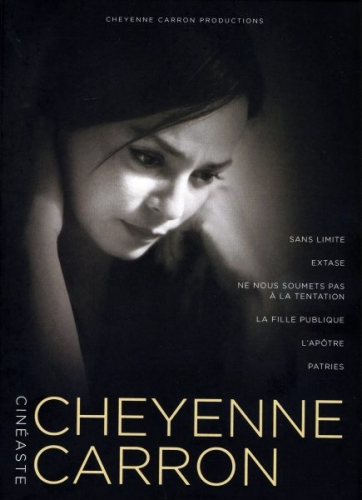 Henri, lui, c’est André Thiéblemont, un véritable ancien officier de Légion. Dans le film, c’est un taiseux et ses silences sont souvent plus évocateurs que ses rares paroles. Ses yeux bleus parlent pour lui, mais c’est avant tout une « gueule » impressionnante et dont la vérité crue des expressions nous émeut.
Henri, lui, c’est André Thiéblemont, un véritable ancien officier de Légion. Dans le film, c’est un taiseux et ses silences sont souvent plus évocateurs que ses rares paroles. Ses yeux bleus parlent pour lui, mais c’est avant tout une « gueule » impressionnante et dont la vérité crue des expressions nous émeut.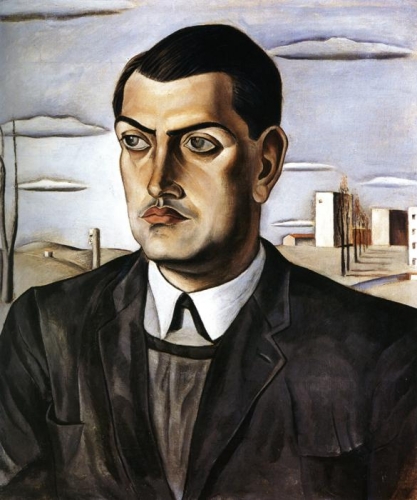
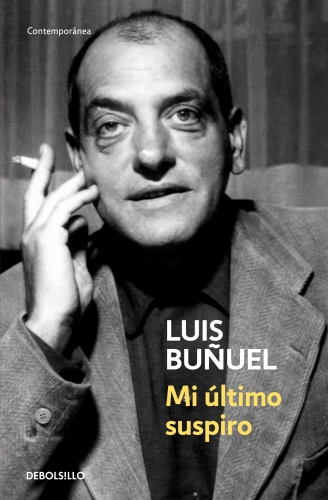 « On peut dire que dans la ville où je suis né (22 février 1900) le Moyen Age a duré jusqu'à la Première Guerre mondiale. C'était une société isolée et immobile, dans laquelle les différences de classe étaient bien marquées. Le respect et la subordination des travailleurs aux grands seigneurs, aux propriétaires terriens, profondément enracinés dans les vieilles coutumes, semblaient immuables. La vie se développa, horizontale et monotone, définitivement ordonnée et dirigée par les cloches de l'église d'El Pilar. »
« On peut dire que dans la ville où je suis né (22 février 1900) le Moyen Age a duré jusqu'à la Première Guerre mondiale. C'était une société isolée et immobile, dans laquelle les différences de classe étaient bien marquées. Le respect et la subordination des travailleurs aux grands seigneurs, aux propriétaires terriens, profondément enracinés dans les vieilles coutumes, semblaient immuables. La vie se développa, horizontale et monotone, définitivement ordonnée et dirigée par les cloches de l'église d'El Pilar. » Comme Samuel Beckett alors (« nous sommes tous cons, mais pas au point de voyager », voyez mon Voyageur éveillé ou mon apocalypse touristique), Buñuel envoie digne promener le tourisme :
Comme Samuel Beckett alors (« nous sommes tous cons, mais pas au point de voyager », voyez mon Voyageur éveillé ou mon apocalypse touristique), Buñuel envoie digne promener le tourisme :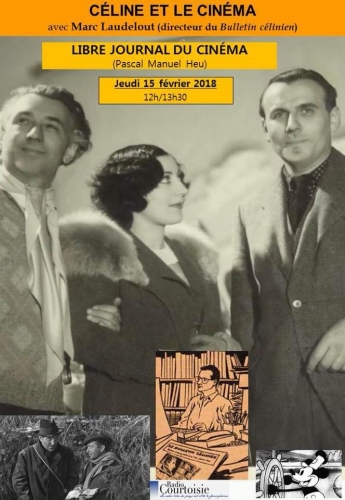
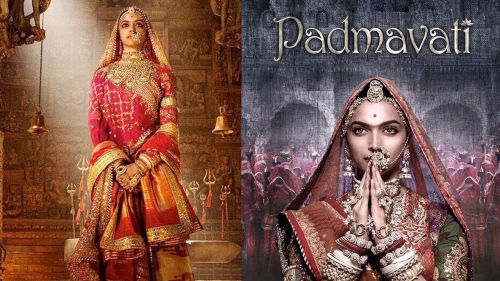
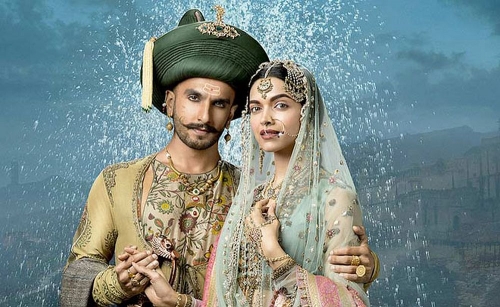


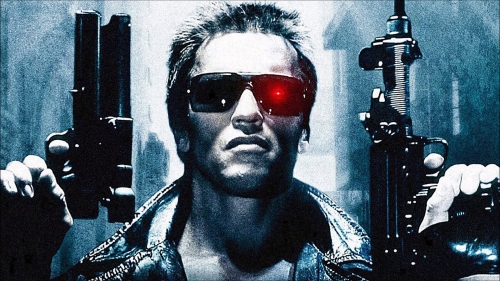
 La guerre contre la machine...
La guerre contre la machine...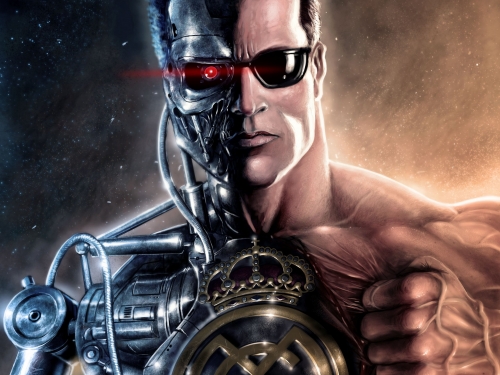

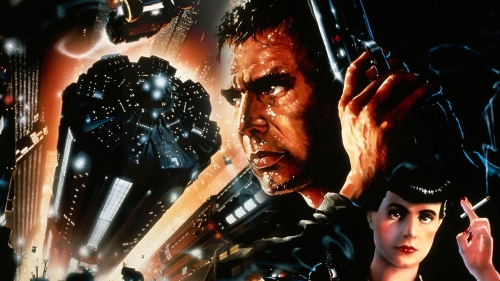

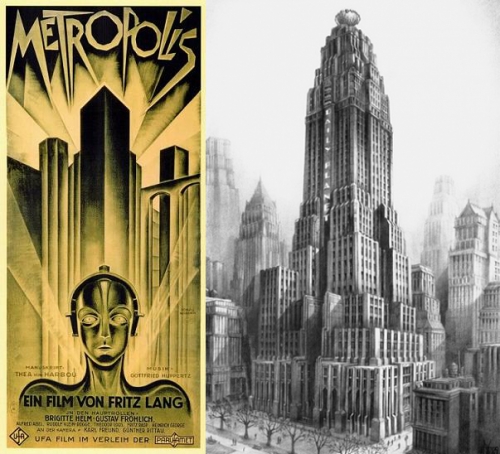

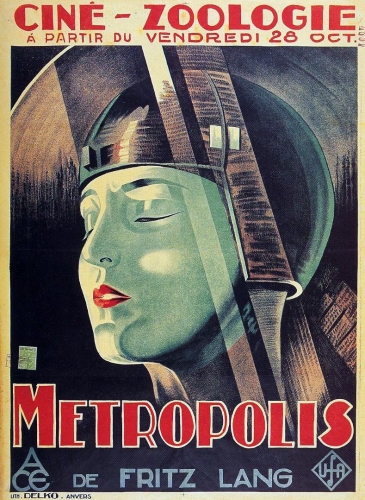
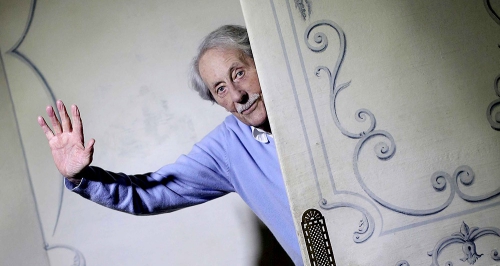

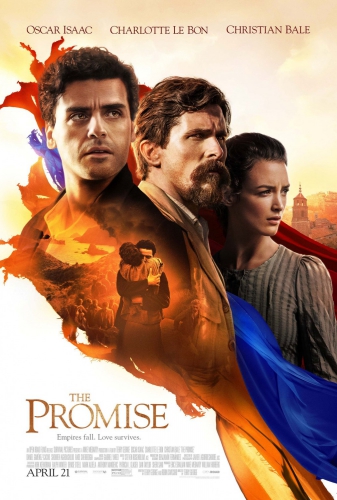
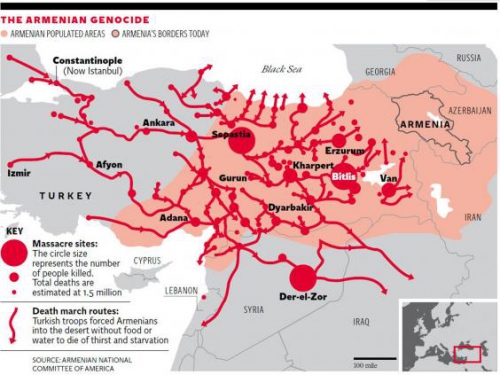





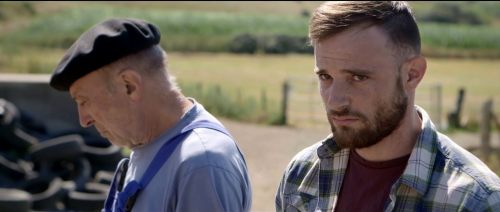
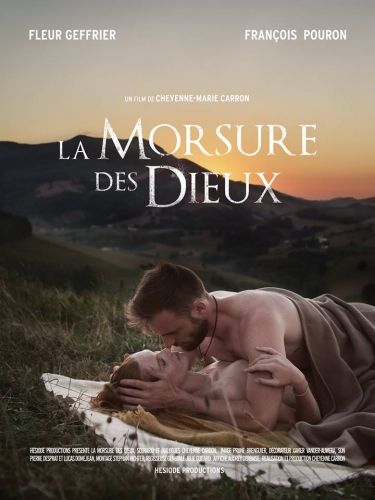
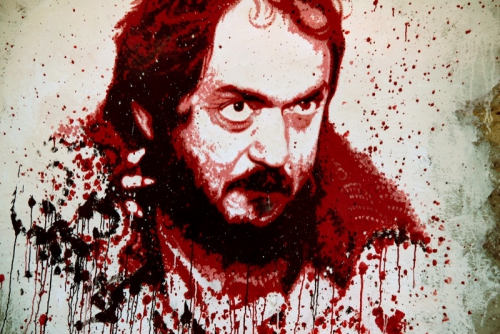
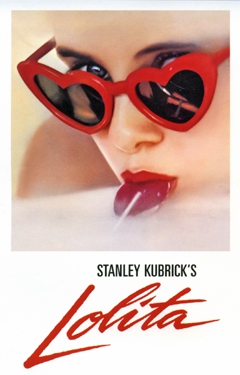 Il tournera alors cinq films piliers en un peu plus de dix ans : Lolita en 1962, Docteur Folamour en 1963, 2001 : L’Odyssée de l’Espace en 1968, Orange Mécanique en 1971 et Barry Lyndon en 1975. Au plus haut de sa carrière, il est reconnu dès 1971 comme l’un des plus grands réalisateurs de septième art. A la sortie du scandaleux Orange Mécanique, il sera menacé de mort en Angleterre, accusé d’incitation au meurtre. Kubrick exige alors de Warner Bros que le film soit retiré de la circulation. A partir de 1975 Stanley Kubrick devient de plus en plus perfectionniste jusqu’à friser l’internement : les tournages deviennent plus longs et le rythme de sortie des films diminue ; bénéficiant d’un statut exceptionnel dans le monde du cinéma. Demeurant un artiste indépendant avec une liberté quasi totale tout en bénéficiant de la puissance financière d’Hollywood pour réaliser et promouvoir ses créations.
Il tournera alors cinq films piliers en un peu plus de dix ans : Lolita en 1962, Docteur Folamour en 1963, 2001 : L’Odyssée de l’Espace en 1968, Orange Mécanique en 1971 et Barry Lyndon en 1975. Au plus haut de sa carrière, il est reconnu dès 1971 comme l’un des plus grands réalisateurs de septième art. A la sortie du scandaleux Orange Mécanique, il sera menacé de mort en Angleterre, accusé d’incitation au meurtre. Kubrick exige alors de Warner Bros que le film soit retiré de la circulation. A partir de 1975 Stanley Kubrick devient de plus en plus perfectionniste jusqu’à friser l’internement : les tournages deviennent plus longs et le rythme de sortie des films diminue ; bénéficiant d’un statut exceptionnel dans le monde du cinéma. Demeurant un artiste indépendant avec une liberté quasi totale tout en bénéficiant de la puissance financière d’Hollywood pour réaliser et promouvoir ses créations.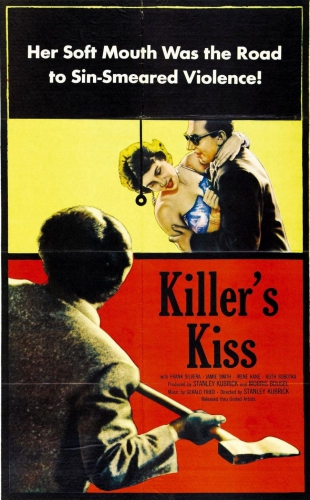 Le Baiser du tueur (killer’s kiss, 1955) : Film annonciateur de la Nouvelle Vague par sa forme, ce deuxième long métrage est un film noir tout comme le premier réalisé avec très peu de moyens. Kubrick y assurant seul les principales fonctions et à l’origine de l’histoire…Un boxeur au bout du rouleau (la scène du combat dans Le Baiser du tueur démontre déjà une certaine jouissance à filmer magistralement la violence) vient en aide à une voisine, tombe amoureux d’elle et se retrouve malgré lui mêlé à une sale affaire mêlant désir et de jalousie.
Le Baiser du tueur (killer’s kiss, 1955) : Film annonciateur de la Nouvelle Vague par sa forme, ce deuxième long métrage est un film noir tout comme le premier réalisé avec très peu de moyens. Kubrick y assurant seul les principales fonctions et à l’origine de l’histoire…Un boxeur au bout du rouleau (la scène du combat dans Le Baiser du tueur démontre déjà une certaine jouissance à filmer magistralement la violence) vient en aide à une voisine, tombe amoureux d’elle et se retrouve malgré lui mêlé à une sale affaire mêlant désir et de jalousie.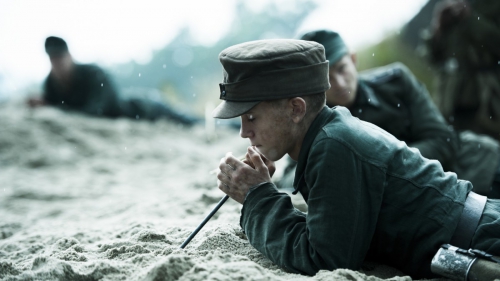
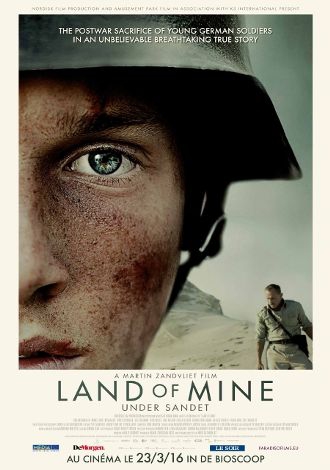 Directed by Martin Zandvliet, Land of Mine is the Danish entry for Best Foreign Film in the upcoming Academy Awards. I despise the Oscars, but even I might take a peek to see if it wins. Nordisk Film claims their standard for Oscar entries is that it must be cinema with high cultural value to the Nordic countries, and in this effort they certainly succeeded. It is one of the most moving war dramas I’ve seen.
Directed by Martin Zandvliet, Land of Mine is the Danish entry for Best Foreign Film in the upcoming Academy Awards. I despise the Oscars, but even I might take a peek to see if it wins. Nordisk Film claims their standard for Oscar entries is that it must be cinema with high cultural value to the Nordic countries, and in this effort they certainly succeeded. It is one of the most moving war dramas I’ve seen.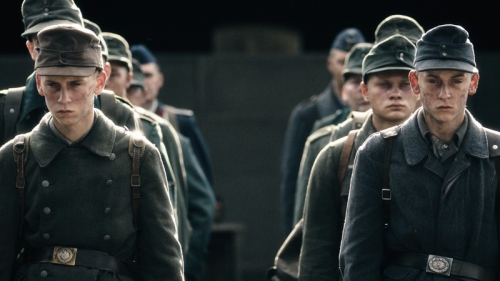
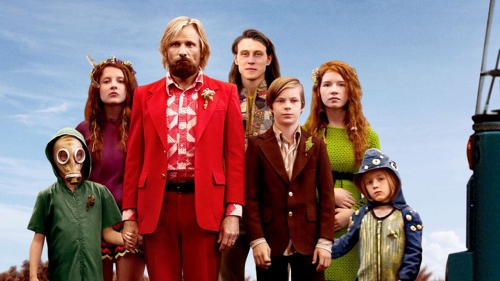
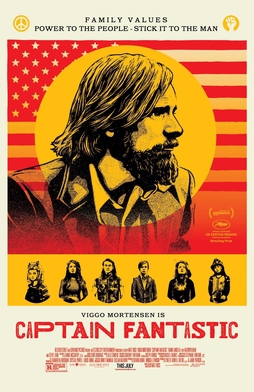

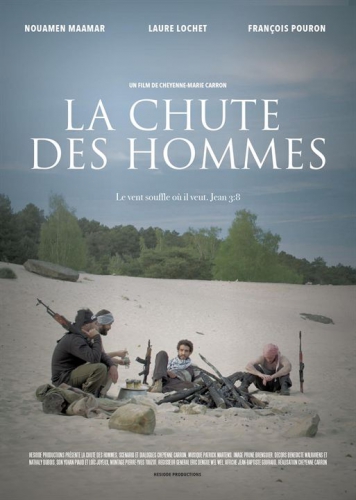 Lucie est une jeune Parisienne, fille d’un père aux convictions païennes et d’une mère chrétienne d’origine ukrainienne. Spécialiste des parfums, elle doit se rendre dans un pays oriental (dont le nom ne sera, à dessein, jamais indiqué) pour mener une recherche dans le cadre de son sujet d’étude, à savoir « l’histoire des odeurs et la mémoire des peuples ». Le thème des parfums reviendra d’ailleurs comme un leitmotiv tout au long du film, qui aurait tout à fait pu être une œuvre tournée en odorama ! Les choses ne se passent toutefois pas comme prévu et, peu après son arrivée, la jeune fille, trompée par un chauffeur de taxi, est livrée à un groupe de djihadistes qui la prennent en otage pour obtenir de l’argent de la France. L’histoire nous est racontée tour à tour selon trois perspectives : celle de Lucie, celle de Younes (le chauffeur de taxi en proie à un dilemme moral et que les difficultés économiques contraignent à se faire le complice des islamistes) et celle d’Abou (un djihadiste d’origine française qui va peu à peu être assailli de doutes sur son engagement à mesure que la situation se dégrade).
Lucie est une jeune Parisienne, fille d’un père aux convictions païennes et d’une mère chrétienne d’origine ukrainienne. Spécialiste des parfums, elle doit se rendre dans un pays oriental (dont le nom ne sera, à dessein, jamais indiqué) pour mener une recherche dans le cadre de son sujet d’étude, à savoir « l’histoire des odeurs et la mémoire des peuples ». Le thème des parfums reviendra d’ailleurs comme un leitmotiv tout au long du film, qui aurait tout à fait pu être une œuvre tournée en odorama ! Les choses ne se passent toutefois pas comme prévu et, peu après son arrivée, la jeune fille, trompée par un chauffeur de taxi, est livrée à un groupe de djihadistes qui la prennent en otage pour obtenir de l’argent de la France. L’histoire nous est racontée tour à tour selon trois perspectives : celle de Lucie, celle de Younes (le chauffeur de taxi en proie à un dilemme moral et que les difficultés économiques contraignent à se faire le complice des islamistes) et celle d’Abou (un djihadiste d’origine française qui va peu à peu être assailli de doutes sur son engagement à mesure que la situation se dégrade).